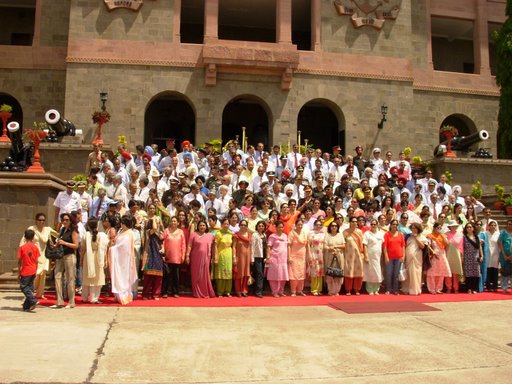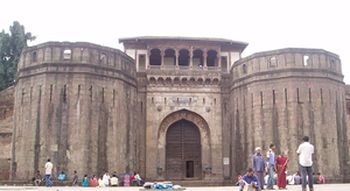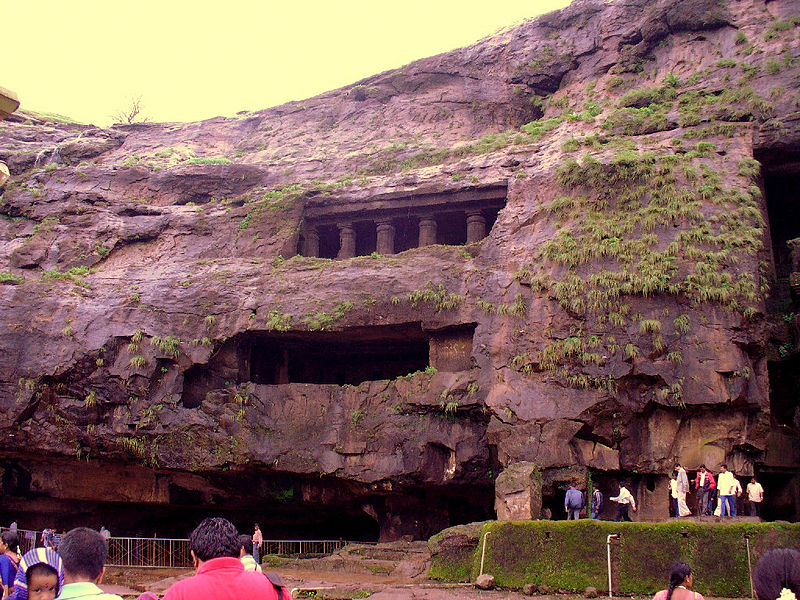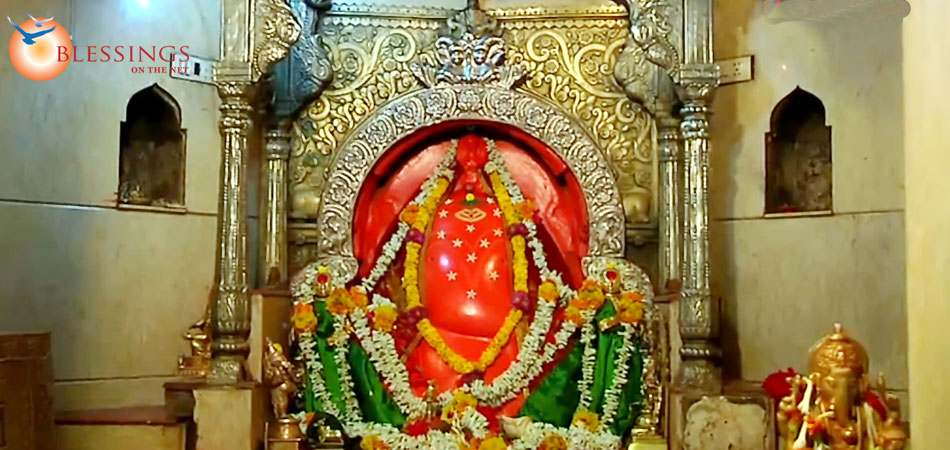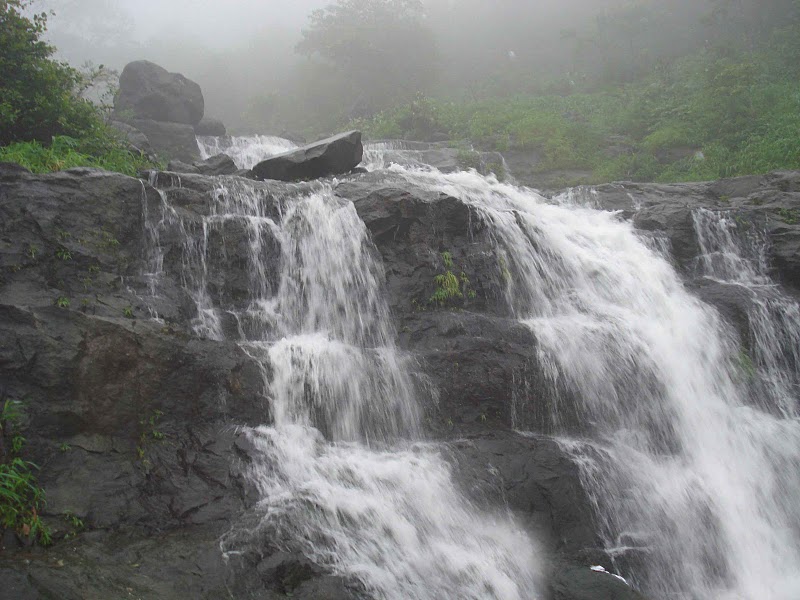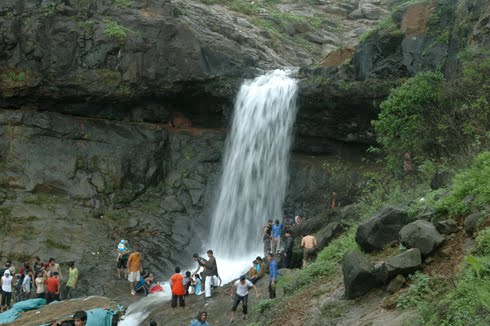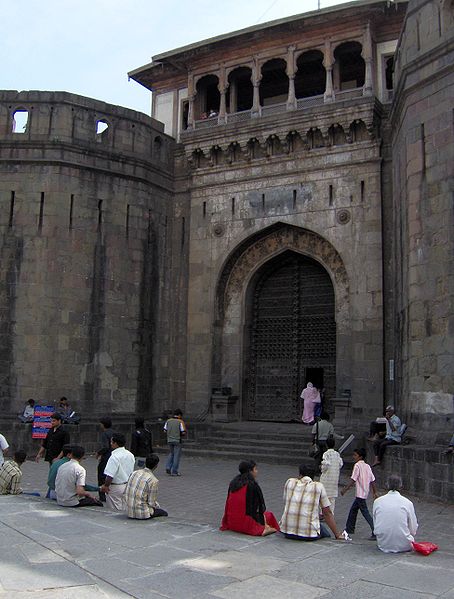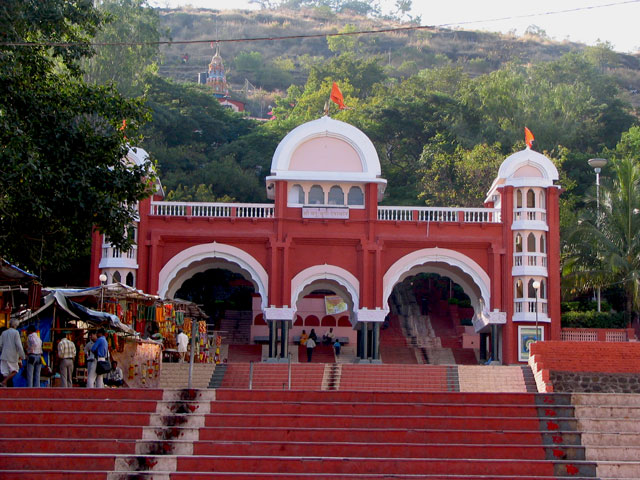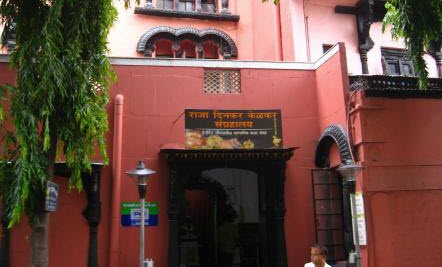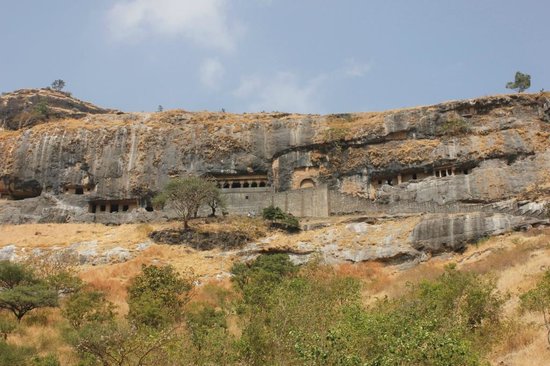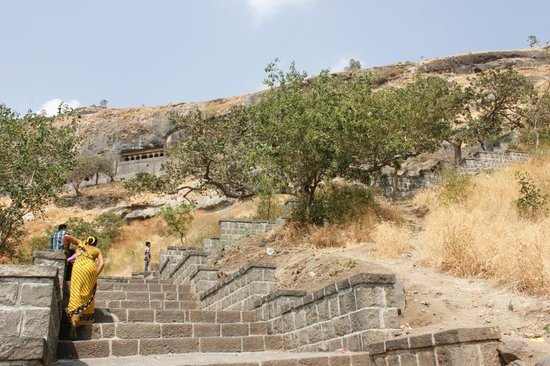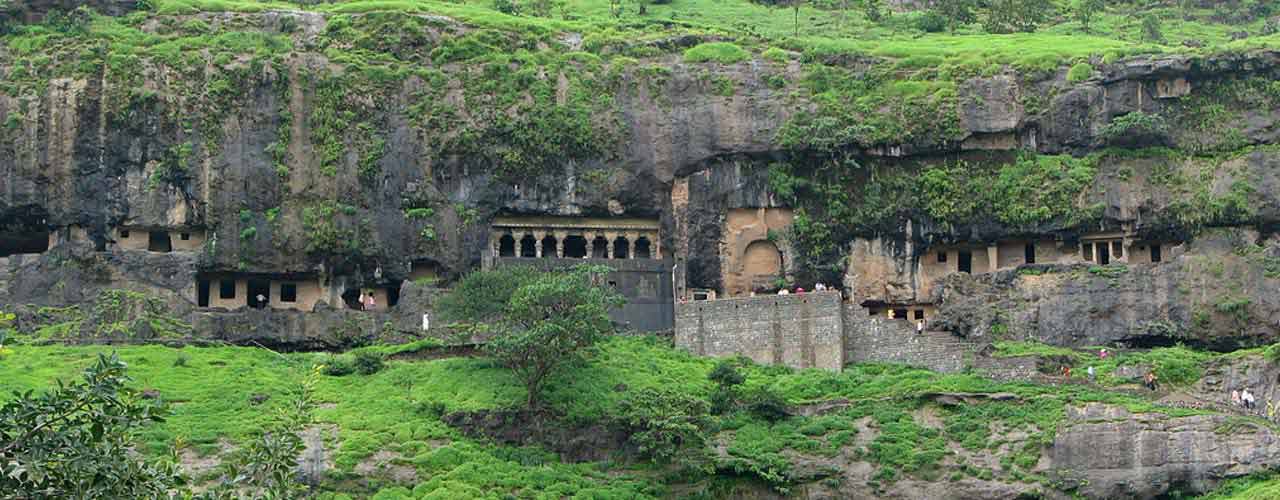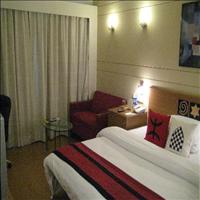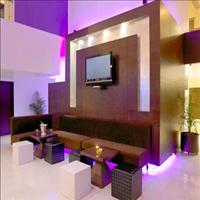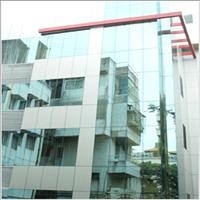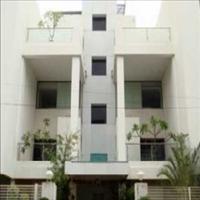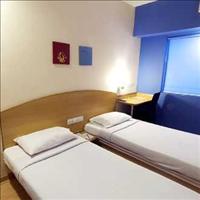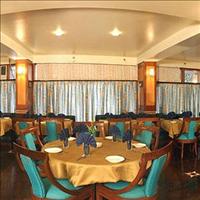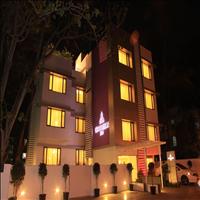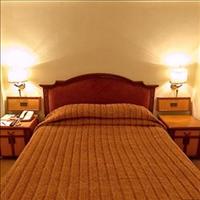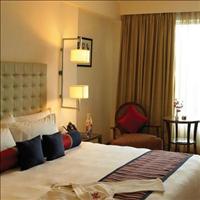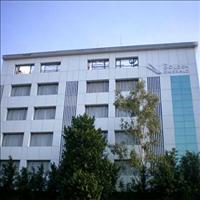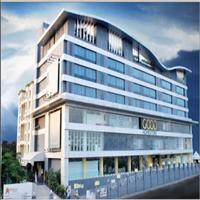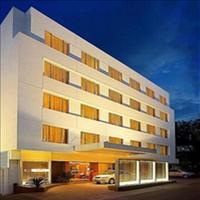Pune
Queen of the Deccan
General Information
Other Name: Poona, District: Pune, State: Maharashtra, India
Area: 138 Sq. Km.
Languages Spoken: Marathi, English, Hindi
Long Distance Code: +91-20
Importance: Education and cultural capital of Maharashtra
Best Time to Visit: June to March
Description
Pune or Punyanagari (the pious city), as it is called has had a glorious past of nearly 1000 years both illustrious and romantic. Although the historical association of the city started with the legendary hero of Maharashtra, Shivaji, Pune actually gained prominence only when it was handed over to the administrators of the Maratha kingdom, the Peshwas. <br />A small village inhabited by musicians and artists in 613 A.D grew into the Deccan Capital to rival Delhi was during the reign of Peshwa and therefore it is also known as the city of Peshwas. In fact Pune has been known by a plethora of sobriquets, like: cultural capital of Maharashtra, pensioner's paradise and Oxford of the East. <br />Pune exemplifies an indigenous Marathi culture and ethos, in which education, arts and crafts, and theatres are given due prominence. It is the birthplace of the poet-saint Tukaram, and Dnyaneshwar. It has been the home of great freedom fighters like Bal Gangadhar Tilak, Agarkar and Gopal Krishna Gokhale. Pune city has also played a pivotal role in the freedom movement of India. <br />It was developed into a 19th century Indian army town by the British and even today the National Defence Academy based here. <br />At present Pune is the 7th ranking industrial metro of India. In fact Kothrud, a Pune suburb, has been named as the town having fastest urban growth rate in the Guinness book of world records. It is also coming up as a major IT city and with the Film and Television Institute of India; it is fast becoming one of the major hubs of industry and commerce in the country. <br />A tourist in Pune can enjoy many cultural, historical sites along with its pleasant weather and would never find the dearth of eating joints in the city. Thus, a new sobriquet has recently been attached to the city: The city of Restaurants.<br />Location
Poona is located just 170-km from Mumbai at an altitude of 598m. Surrounded by the western Ghat jungles of the Sahyadri hills and situated on the confluence of Rivers Mula and Mutha on the edge of the Deccan plains, Pune enjoys a pleasant climate throughout the year. Better known as the second city of Maharashtra, Pune is also considered to be the cultural capital of the state. Pune is among the greenest urban areas in the country with more than 40 per cent of its area under green cover.
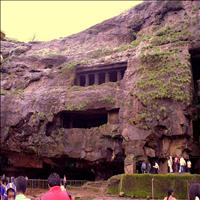 Around 10 km from the hill station of Lonavala on the Mumbai Pune highway are the unique caves of Karle and Bhaje. They are considered to be ultimate expression of Satwahan art of Hinayana sculpture. These twin caves are supposed to be the largest of the cave temples in the whole of Maharashtra cave temples. The caves cut into solid rock have 37 octagonal pillars of remarkable beauty. Each column rests in a water jar. Some of these pillars have capitals on the top. The capitals have figures of elephants kneeling on bell shaped bases. \r\nThese ancient caves are nearly 2000 years old and still stand attraction for many. They also stand a good attraction as the hill stations of Lonavala and Khandala are nearby.
Around 10 km from the hill station of Lonavala on the Mumbai Pune highway are the unique caves of Karle and Bhaje. They are considered to be ultimate expression of Satwahan art of Hinayana sculpture. These twin caves are supposed to be the largest of the cave temples in the whole of Maharashtra cave temples. The caves cut into solid rock have 37 octagonal pillars of remarkable beauty. Each column rests in a water jar. Some of these pillars have capitals on the top. The capitals have figures of elephants kneeling on bell shaped bases. \r\nThese ancient caves are nearly 2000 years old and still stand attraction for many. They also stand a good attraction as the hill stations of Lonavala and Khandala are nearby.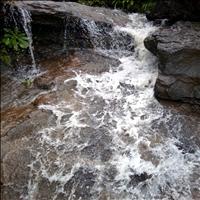 Hardly any distance from Pune, near Kamshet, in the village of Raotawadi are the unexplored Buddhist caves of Bedse. The caves those hardly find any mention anywhere are a treasure cove for the enthusiasts. There is hardly any information about these caves in the history of such sculpted caves of India. These are ancient Buddhist caves on the line of Ellora or Karle caves near Lonavala. \r\nIt is a small complex with not much of intricate work like the Ellora but very much like the Karle caves. Although the period of these caves is unknown, people believe that they were built somewhere in the 1st century as the sculptures carved mostly pertain to the Hinayana Buddhism. It seems that the caves were carved by the same set of people who carved the Karle caves and are most probably built prior to the Karle caves. The sculptures and the styles including the Stupas and Chaityas are nearly the same except for its size. The Bedse caves are smaller than the Karle caves. The caves facing the east are best visited in the morning as the sunlight directly falls inside and gives a clear vision.\r\nBedse caves must have lost its importance when the Karle caves were sculpted, and also by then the impact of Buddhism had decreased in that part of India. The Viharas and the Stupas are beautiful pertaining to the Hinayana Buddhist style. While some pillars have flower and wheel motifs carved on them most of the caves are plain and simple, basically meant for praying purpose. The not so huge cylindrical Stupa has a small wooden umbrella on top, which the locals say is as old as the birth of these caves. \r\nThe road to these caves is not neat and at times trekking is the best option. But the trek and the dusty road too do not bother as the caves are worth a visit.
Hardly any distance from Pune, near Kamshet, in the village of Raotawadi are the unexplored Buddhist caves of Bedse. The caves those hardly find any mention anywhere are a treasure cove for the enthusiasts. There is hardly any information about these caves in the history of such sculpted caves of India. These are ancient Buddhist caves on the line of Ellora or Karle caves near Lonavala. \r\nIt is a small complex with not much of intricate work like the Ellora but very much like the Karle caves. Although the period of these caves is unknown, people believe that they were built somewhere in the 1st century as the sculptures carved mostly pertain to the Hinayana Buddhism. It seems that the caves were carved by the same set of people who carved the Karle caves and are most probably built prior to the Karle caves. The sculptures and the styles including the Stupas and Chaityas are nearly the same except for its size. The Bedse caves are smaller than the Karle caves. The caves facing the east are best visited in the morning as the sunlight directly falls inside and gives a clear vision.\r\nBedse caves must have lost its importance when the Karle caves were sculpted, and also by then the impact of Buddhism had decreased in that part of India. The Viharas and the Stupas are beautiful pertaining to the Hinayana Buddhist style. While some pillars have flower and wheel motifs carved on them most of the caves are plain and simple, basically meant for praying purpose. The not so huge cylindrical Stupa has a small wooden umbrella on top, which the locals say is as old as the birth of these caves. \r\nThe road to these caves is not neat and at times trekking is the best option. But the trek and the dusty road too do not bother as the caves are worth a visit.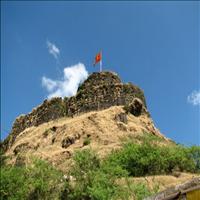 Forts Lohagad and Visapur - 52 kms. away from Pune, atop an impressive hill, these majestic forts were built in the 18th century. They are separated by a 1 km. ridge and are ideal for trekking. The Shivneri - 94.5 kms. away from Pune, is the magnificent fort where Shivaji was born. One of the interesting features of this fort is a mosque with two minarets which are joined by a graceful arch. The Raigad Fort was made the capital dwelling place by Shivaji. From the fort located on an isolated hilltop, you can get a breathtaking view of the Western Ghats. Raigad is amongst the must see places around Pune though in ruins.\r\n
Forts Lohagad and Visapur - 52 kms. away from Pune, atop an impressive hill, these majestic forts were built in the 18th century. They are separated by a 1 km. ridge and are ideal for trekking. The Shivneri - 94.5 kms. away from Pune, is the magnificent fort where Shivaji was born. One of the interesting features of this fort is a mosque with two minarets which are joined by a graceful arch. The Raigad Fort was made the capital dwelling place by Shivaji. From the fort located on an isolated hilltop, you can get a breathtaking view of the Western Ghats. Raigad is amongst the must see places around Pune though in ruins.\r\n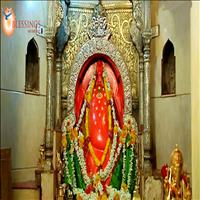 The elephant God Ganesh or Ganapati is the prime deity of the people of Maharashtra. Worship of Ganesh has been going for ages in Maharashtra. There are eight temples of Swayambhu Ganesh In Maharashtra. The people believe that these idols are not made by anyone but they are formed on their own, self made or Swayambhu. These eight are famous as Ashtavinayak. All the temples are very old dating back to 16 - 17 century and are within the span of 20 to 100 km from Pune.
The elephant God Ganesh or Ganapati is the prime deity of the people of Maharashtra. Worship of Ganesh has been going for ages in Maharashtra. There are eight temples of Swayambhu Ganesh In Maharashtra. The people believe that these idols are not made by anyone but they are formed on their own, self made or Swayambhu. These eight are famous as Ashtavinayak. All the temples are very old dating back to 16 - 17 century and are within the span of 20 to 100 km from Pune.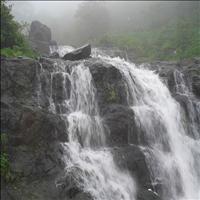 Pune being surrounded by the Sahyadris is very near to various hill stations of Maharashtra. Mahabaleshwar, the queen of hill stations in Maharashtra was established in 1829 by the British. Situated in the heart of Sahyadri hills, this cool place has a legendary past with a temple dedicated to Shiva. At an altitude of 1372m, this place is 120 km away from Pune and offers splendid spots.\r\n\r\nMatheran is actually closer to Mumbai but is hardly 118 km from Pune. The most unforgettable things about Matheran are the deep forests, waterfalls nearby and the splendid flora - fauna. Monsoon spells out double magic in Matheran. \r\n\r\nLonavala and Khandala are two charming little hill stations on the western slopes of the Sahyadris, 5-km apart, that straddle the Mumbai - Pune highway at an altitude of 625m. These small towns, 70 km away from Pune, are blessed with nature in bounty. With beautiful hills, deep green valleys, huge lakes, and waterfalls these are paradise for the trekkers.
Pune being surrounded by the Sahyadris is very near to various hill stations of Maharashtra. Mahabaleshwar, the queen of hill stations in Maharashtra was established in 1829 by the British. Situated in the heart of Sahyadri hills, this cool place has a legendary past with a temple dedicated to Shiva. At an altitude of 1372m, this place is 120 km away from Pune and offers splendid spots.\r\n\r\nMatheran is actually closer to Mumbai but is hardly 118 km from Pune. The most unforgettable things about Matheran are the deep forests, waterfalls nearby and the splendid flora - fauna. Monsoon spells out double magic in Matheran. \r\n\r\nLonavala and Khandala are two charming little hill stations on the western slopes of the Sahyadris, 5-km apart, that straddle the Mumbai - Pune highway at an altitude of 625m. These small towns, 70 km away from Pune, are blessed with nature in bounty. With beautiful hills, deep green valleys, huge lakes, and waterfalls these are paradise for the trekkers.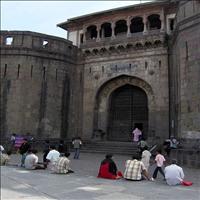 Shaniwarwada, the royal residence of the Peshwas was built in the 18th century by the second Peshwa, Bajirao-I. It was built in wood with beautiful carvings and paintings. It became the seat of political power and achieved tremendous importance. But unfortunately nothing of the big palace remains as it was burned down. Not once but twice. It is said to have been the finest palace in the Deccan in its times.
Shaniwarwada, the royal residence of the Peshwas was built in the 18th century by the second Peshwa, Bajirao-I. It was built in wood with beautiful carvings and paintings. It became the seat of political power and achieved tremendous importance. But unfortunately nothing of the big palace remains as it was burned down. Not once but twice. It is said to have been the finest palace in the Deccan in its times. This garden on the outskirts of the city is the Ashram of Osho Rajneesh, a spiritual leader to many. The Gardens are beautiful and one can meditate over here.
This garden on the outskirts of the city is the Ashram of Osho Rajneesh, a spiritual leader to many. The Gardens are beautiful and one can meditate over here.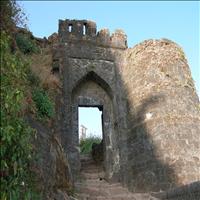 Simhagad fort stands 25-km away from Pune and is one of the important Maratha forts. This rugged fort was impeccable and was won by Shivaji, who renamed it after his loyal associate Tanaji Malusare who fought like a lion to win the fort.
Simhagad fort stands 25-km away from Pune and is one of the important Maratha forts. This rugged fort was impeccable and was won by Shivaji, who renamed it after his loyal associate Tanaji Malusare who fought like a lion to win the fort.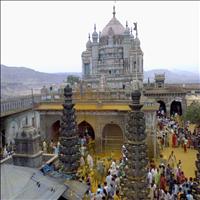 Pune has many holy places around it. Jejuri which is 48 km from Pune has an old temple situated on the hill dedicated to Mhalsakant or Malhari Martand, a form of Lord Shiva. As the temple is on the hill, one has to climb almost 200 steps The idol of Khandoba in the temple is beautiful and also very old.
Pune has many holy places around it. Jejuri which is 48 km from Pune has an old temple situated on the hill dedicated to Mhalsakant or Malhari Martand, a form of Lord Shiva. As the temple is on the hill, one has to climb almost 200 steps The idol of Khandoba in the temple is beautiful and also very old. Pune being the cultural capital of Maharashtra has many temples, old and new. Prominent among them are some Hanuman and Ganesh temples. \r\nThe 400 year old Kasba Ganapati temple is situated in the heart of the city and is known as the deity of the city, who controls and protects the people of the city. The legend goes that when Pune was going through a bad patch, a person named Bhatt saw the God in his dreams and the God told him His whereabouts. The place where the temple stands was the place he found the idol. After the installation in 1626, Pune's economic and political conditions changed and therefore this Ganapati is called the protector of the city. The temple built by Shivaji's mother build a temple for it which still stands tall and erect.\r\nThe Trishundya Ganapati idol is different and beautiful. The God has three trunks and is sitting on a Peacock. The temple built in 1726 still stands without any changes.\r\nOn a small hillock near the city is the Parvati Ganesh temple. It has 108 stairs and one can get a beautiful view of the Pune city from the top. This hillock has a small temple of Ganesh built by the Peshwas in 1749. It is a beautiful marble idol. There is also a small museum on the top displaying the artifacts of the Peshwa clan. Inside the temple there is a small tunnel with three outlets. One goes down the hill, another to the Chatuhshrungi temple, nearly 7 - 8 km away and the third in the valley of death to dodge the enemy. \r\nThe popular temple of Goddess Chatuhshrungi considered as the reigning deity of Pune is situated on the slopes of a mountain, northwest part of the city. An ancient temple during the era of Shivaji, the goddess also known as Mahakali, Mahalakshmi, Mahasaraswati and Ambareshwari, was worshipped by Shivaji also. This temple is ninety feet high located midst of nature's scenic beauty.\r\nThis 8th century rock cut temple of Pataleshwar, is hidden in the heart of the city in amidst the modern buildings and structures. Reminiscent of Ellora, the temple has been carved out of a single boulder of awe inspiring size which includes massive pillars. The temple dedicated to Shiva and a Nandi bull is thronged by devotees even today.\r\n
Pune being the cultural capital of Maharashtra has many temples, old and new. Prominent among them are some Hanuman and Ganesh temples. \r\nThe 400 year old Kasba Ganapati temple is situated in the heart of the city and is known as the deity of the city, who controls and protects the people of the city. The legend goes that when Pune was going through a bad patch, a person named Bhatt saw the God in his dreams and the God told him His whereabouts. The place where the temple stands was the place he found the idol. After the installation in 1626, Pune's economic and political conditions changed and therefore this Ganapati is called the protector of the city. The temple built by Shivaji's mother build a temple for it which still stands tall and erect.\r\nThe Trishundya Ganapati idol is different and beautiful. The God has three trunks and is sitting on a Peacock. The temple built in 1726 still stands without any changes.\r\nOn a small hillock near the city is the Parvati Ganesh temple. It has 108 stairs and one can get a beautiful view of the Pune city from the top. This hillock has a small temple of Ganesh built by the Peshwas in 1749. It is a beautiful marble idol. There is also a small museum on the top displaying the artifacts of the Peshwa clan. Inside the temple there is a small tunnel with three outlets. One goes down the hill, another to the Chatuhshrungi temple, nearly 7 - 8 km away and the third in the valley of death to dodge the enemy. \r\nThe popular temple of Goddess Chatuhshrungi considered as the reigning deity of Pune is situated on the slopes of a mountain, northwest part of the city. An ancient temple during the era of Shivaji, the goddess also known as Mahakali, Mahalakshmi, Mahasaraswati and Ambareshwari, was worshipped by Shivaji also. This temple is ninety feet high located midst of nature's scenic beauty.\r\nThis 8th century rock cut temple of Pataleshwar, is hidden in the heart of the city in amidst the modern buildings and structures. Reminiscent of Ellora, the temple has been carved out of a single boulder of awe inspiring size which includes massive pillars. The temple dedicated to Shiva and a Nandi bull is thronged by devotees even today.\r\n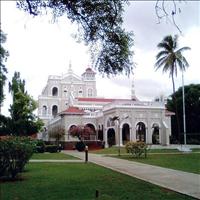 Aga Khan Palace is a great historical landmark of Pune, situated 2-km away from Bund Garden in Yerwada. Aga Khan Palace is made of Italian arches and spacious lawns. This personal palace was donated to the country in the seventies. The significance of this palace is that, Mahatma Gandhi and his wife were imprisoned here by the British. Kastur ba Gandhi died here. The palace has her mausoleum in the rear gardens.
Aga Khan Palace is a great historical landmark of Pune, situated 2-km away from Bund Garden in Yerwada. Aga Khan Palace is made of Italian arches and spacious lawns. This personal palace was donated to the country in the seventies. The significance of this palace is that, Mahatma Gandhi and his wife were imprisoned here by the British. Kastur ba Gandhi died here. The palace has her mausoleum in the rear gardens.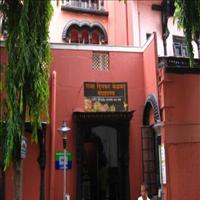 This unique museum is housed in one small and ancient building in the heart of Pune's old city. The uniqueness is that this museum which was donated to the nation in the sixties is the personal collection of one man, Dinkar Kelkar and his wife and is named after their only son, Raja, who died early.\r\nThere are nearly 32 sections in this museum from ancient manuscripts, to clothes, vessels, jewellery, weapons, et all. The artifacts are well preserved and nicely displayed. The main attraction is the Mastani Mahal which was re-erected from the place it was brought to this house.\r\n
This unique museum is housed in one small and ancient building in the heart of Pune's old city. The uniqueness is that this museum which was donated to the nation in the sixties is the personal collection of one man, Dinkar Kelkar and his wife and is named after their only son, Raja, who died early.\r\nThere are nearly 32 sections in this museum from ancient manuscripts, to clothes, vessels, jewellery, weapons, et all. The artifacts are well preserved and nicely displayed. The main attraction is the Mastani Mahal which was re-erected from the place it was brought to this house.\r\n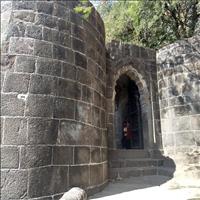 Junnar caves are also an important destination for the Buddhist pilgrims, not very far from Mumbai and Pune, these caves are situated in Aurangabad district, and are well known to the tourists, especially the Buddhist pilgrims around the world. There are many caves in the hill ranges, all-important in the archaeological point of view.There are three groups of caves in the hills, the Tulija Lena, and the Ganesh lena being prominent. The place is surrounded by lush greens, which makes the place more attractive and a dear one among all Buddhist destinations.All of the Junnar caves were founded somewhere between 2nd Century BC and 3rd Century AD.
Junnar caves are also an important destination for the Buddhist pilgrims, not very far from Mumbai and Pune, these caves are situated in Aurangabad district, and are well known to the tourists, especially the Buddhist pilgrims around the world. There are many caves in the hill ranges, all-important in the archaeological point of view.There are three groups of caves in the hills, the Tulija Lena, and the Ganesh lena being prominent. The place is surrounded by lush greens, which makes the place more attractive and a dear one among all Buddhist destinations.All of the Junnar caves were founded somewhere between 2nd Century BC and 3rd Century AD.Culture and Pilgrimage of Maharashtra / PI-0363 (16 Days / 15 Nights)
Mumbai-Pune-Bhimashankar-Pune-Aurangabad-Grishneshwara-Aurangabad-Shirdi-Shanishinganapur-Shirdi-Nashik-Trimbakeshwar-Nashik-Mumbai
Nestled close to Arabian Sea, enjoy a holiday trip to Maharashtra, the third largest state of India. In addition to several cultural and modern attractions, the state is also dotted with many pilgrimage spots such as the Synagogue in Pune , Siddhivinayak Ganesha Temple in Mumbai and the holy city of Shirdi where people of all faiths come with joined hands. The state is cultural, modern as well as religious tourist destination for people of all faiths and religions.
Detailed Itinerary
Day 1 : Mumbai
Day 2 : Mumbai
Day 3 : Mumbai - Pune
Day 4 : Pune
Day 5 : Pune - Bhimashankar - Pune
Day 6 : Pune - Aurangabad
Day 7 : Aurangabad
Day 8 : Aurangabad
Day 9 : Aurangabad
Day 10 : Aurangabad - Grishneshwara - Aurangabad
Day 11 : Aurangabad - Shirdi
Day 12 : Shirdi - Shanishinganapur - Shirdi
Day 13 : Shirdi - Nashik
Day 14 : Nashik - Trimbakeshwar - Nashik
Day 15 : Nashik - Mumbai
Day 16 : Mumbai
Mumbai-Pune-Bhimashankar-Pune-Aurangabad-Grishneshwara-Aurangabad-Shirdi-Shanishinganapur-Shirdi-Nashik-Trimbakeshwar-Nashik-Mumbai
Nestled close to Arabian Sea, enjoy a holiday trip to Maharashtra, the third largest state of India. In addition to several cultural and modern attractions, the state is also dotted with many pilgrimage spots such as the Synagogue in Pune , Siddhivinayak Ganesha Temple in Mumbai and the holy city of Shirdi where people of all faiths come with joined hands. The state is cultural, modern as well as religious tourist destination for people of all faiths and religions.
Detailed Itinerary
Day 1 : Mumbai
Day 2 : Mumbai
Day 3 : Mumbai - Pune
Day 4 : Pune
Day 5 : Pune - Bhimashankar - Pune
Day 6 : Pune - Aurangabad
Day 7 : Aurangabad
Day 8 : Aurangabad
Day 9 : Aurangabad
Day 10 : Aurangabad - Grishneshwara - Aurangabad
Day 11 : Aurangabad - Shirdi
Day 12 : Shirdi - Shanishinganapur - Shirdi
Day 13 : Shirdi - Nashik
Day 14 : Nashik - Trimbakeshwar - Nashik
Day 15 : Nashik - Mumbai
Day 16 : Mumbai
The Deccan Odyssey / PI-054 (9 Days / 8 Nights)
Mumbai-Ratnagiri-Jaigadh-Ganapatipule-Ratnagiri-Sindhudurg-Tarkarli-Sawantwadi-Goa-Pune-Aurangabad-Ajanta Cave-Nashik-Mumbai
As the wind whispers through the halo of legends crowning the land of the mighty Marathas, a lone majestic whistle blows its salutation of honour as it gracefully traverses this land of fantasy. Welcome to the mesmerizing Maharashtra. Experience aboard the luxurious DECCAN ODYSSEY. A train journey adorned in luxury, the Deccan Odyssey transports its guests on an unforgettable sojourn of a land shining in legions grandeur - serene beaches, magnificent forts palaces, and experiencing heavenly tales etched in colossal rocks.Experience the finest and the best of train journeys of the world. The Deccan Odyssey is much more than a mere luxury train cruise. It''s a ''classical odyssey'' of time beyond the realms of the present. Welcome aboard!
Detailed Itinerary
Day 1 : Mumbai-Ratnagiri
Day 2 : Jaigadh-Ganapatipule-Ratnagiri
Day 3 : Sindhudurg-Tarkarli-Sawantwadi
Day 4 : Goa
Day 5 : Pune
Day 6 : Aurangabad
Day 7 : Ajanta Cave-Nashik
Day 8 : Mumbai
Day 9 : Mumbai
Mumbai-Ratnagiri-Jaigadh-Ganapatipule-Ratnagiri-Sindhudurg-Tarkarli-Sawantwadi-Goa-Pune-Aurangabad-Ajanta Cave-Nashik-Mumbai
As the wind whispers through the halo of legends crowning the land of the mighty Marathas, a lone majestic whistle blows its salutation of honour as it gracefully traverses this land of fantasy. Welcome to the mesmerizing Maharashtra. Experience aboard the luxurious DECCAN ODYSSEY. A train journey adorned in luxury, the Deccan Odyssey transports its guests on an unforgettable sojourn of a land shining in legions grandeur - serene beaches, magnificent forts palaces, and experiencing heavenly tales etched in colossal rocks.Experience the finest and the best of train journeys of the world. The Deccan Odyssey is much more than a mere luxury train cruise. It''s a ''classical odyssey'' of time beyond the realms of the present. Welcome aboard!
Detailed Itinerary
Day 1 : Mumbai-Ratnagiri
Day 2 : Jaigadh-Ganapatipule-Ratnagiri
Day 3 : Sindhudurg-Tarkarli-Sawantwadi
Day 4 : Goa
Day 5 : Pune
Day 6 : Aurangabad
Day 7 : Ajanta Cave-Nashik
Day 8 : Mumbai
Day 9 : Mumbai
Ganpathi Festival / PI-070 (6 Days / 5 Nights)
Mumbai-Pune-Mumbai
Ganesh Chaturthi celebrated as the birthday of Lord Ganesh, the elephant deity, is the most important annual festival in the state of Maharashtra, more so in Mumbai and the cultural capital of Maharashtra, Pune. This patron deity is called as the God of wisdom and removal of all the obstacles, and is worshiped for 11 days in most extravagance in every household and every lane or by-lane of Mumbai and Pune. The festival begins with the installation of beautifully sculpted Ganesh idols in homes and pandals (large tents), colourfully decorated, depicting religious themes or current events. The Lord is worshiped and then immersed on the idols on the 11th day in big processions with people shouting Ganapati bappa Morya, Pudhchya Warshi lawakar ya; which means hail oh Lord and come soon next year. Every lane and by lane has a Ganapati of their own. The God is worshiped with holy chants and hymns and in the nights cultural performances are organized. The zeal and festive mood only stops with the immersion of the Lord, in the sea or nearby rivers. Dates for Ganesh Festival in the coming years: 2018: 12 September to 23 September 2019: 01 September to 12 September 2020: 22 August to 01 September
Detailed Itinerary
Day 1 : Mumbai
Day 2 : Mumbai
Day 3 : Mumbai - Pune
Day 4 : Pune
Day 5 : Pune
Day 6 : Pune - Mumbai
Mumbai-Pune-Mumbai
Ganesh Chaturthi celebrated as the birthday of Lord Ganesh, the elephant deity, is the most important annual festival in the state of Maharashtra, more so in Mumbai and the cultural capital of Maharashtra, Pune. This patron deity is called as the God of wisdom and removal of all the obstacles, and is worshiped for 11 days in most extravagance in every household and every lane or by-lane of Mumbai and Pune. The festival begins with the installation of beautifully sculpted Ganesh idols in homes and pandals (large tents), colourfully decorated, depicting religious themes or current events. The Lord is worshiped and then immersed on the idols on the 11th day in big processions with people shouting Ganapati bappa Morya, Pudhchya Warshi lawakar ya; which means hail oh Lord and come soon next year. Every lane and by lane has a Ganapati of their own. The God is worshiped with holy chants and hymns and in the nights cultural performances are organized. The zeal and festive mood only stops with the immersion of the Lord, in the sea or nearby rivers. Dates for Ganesh Festival in the coming years: 2018: 12 September to 23 September 2019: 01 September to 12 September 2020: 22 August to 01 September
Detailed Itinerary
Day 1 : Mumbai
Day 2 : Mumbai
Day 3 : Mumbai - Pune
Day 4 : Pune
Day 5 : Pune
Day 6 : Pune - Mumbai
Pune, India Tours


